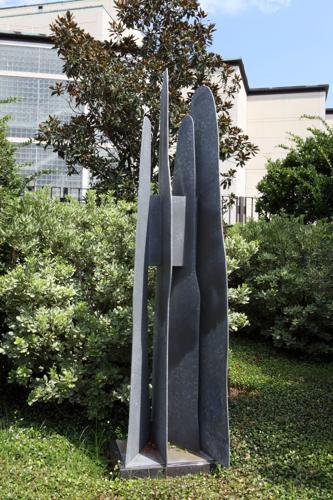In this series, Lagniappe presents a different work each week from the collection of the New Orleans Museum of Art, with commentary from a curator.
"The nature of trees and grass is one thing, but there are many degrees of nature. Concrete can be nature. Interstellar spaces are also nature. There is human nature. In the city, you have to have a new nature. Maybe you have to create that nature."
— Isamu Noguchi, 1970
The above quote from the celebrated artist Isamu Noguchi (1904-1988) is from a talk he presented to students at the San Francisco Art Institute in 1970.
Noguchi encouraged the students to create “a new nature” using the materials and technologies of urbanization that surrounded them. Noguchi engaged with this concept throughout his long and prolific career.
While known primarily as a sculptor, Noguchi also worked within the fields of landscape architecture, public monuments, theater and design, exploring the potential of various materials, including stone, wood, marble and plastic, as well as string, feathers and paper.
In "Rain Mountain" (1982) on view in the Sydney and Walda Besthoff Sculpture Garden at the New Orleans Museum of Art, the artist deployed the material of urbanization and industrialization to create a sculpture evoking gentle mountain peaks.
The “rain” of the title is alluded to by subtle markings and textures on the steel itself, a result of the process of galvanization, which the artist undertook himself.
The use of abstract, organically shaped forms, created from the very materials of industrialization, offer viewers an opportunity to contemplate — and perhaps reconcile — the divide between the natural and the man-made.


